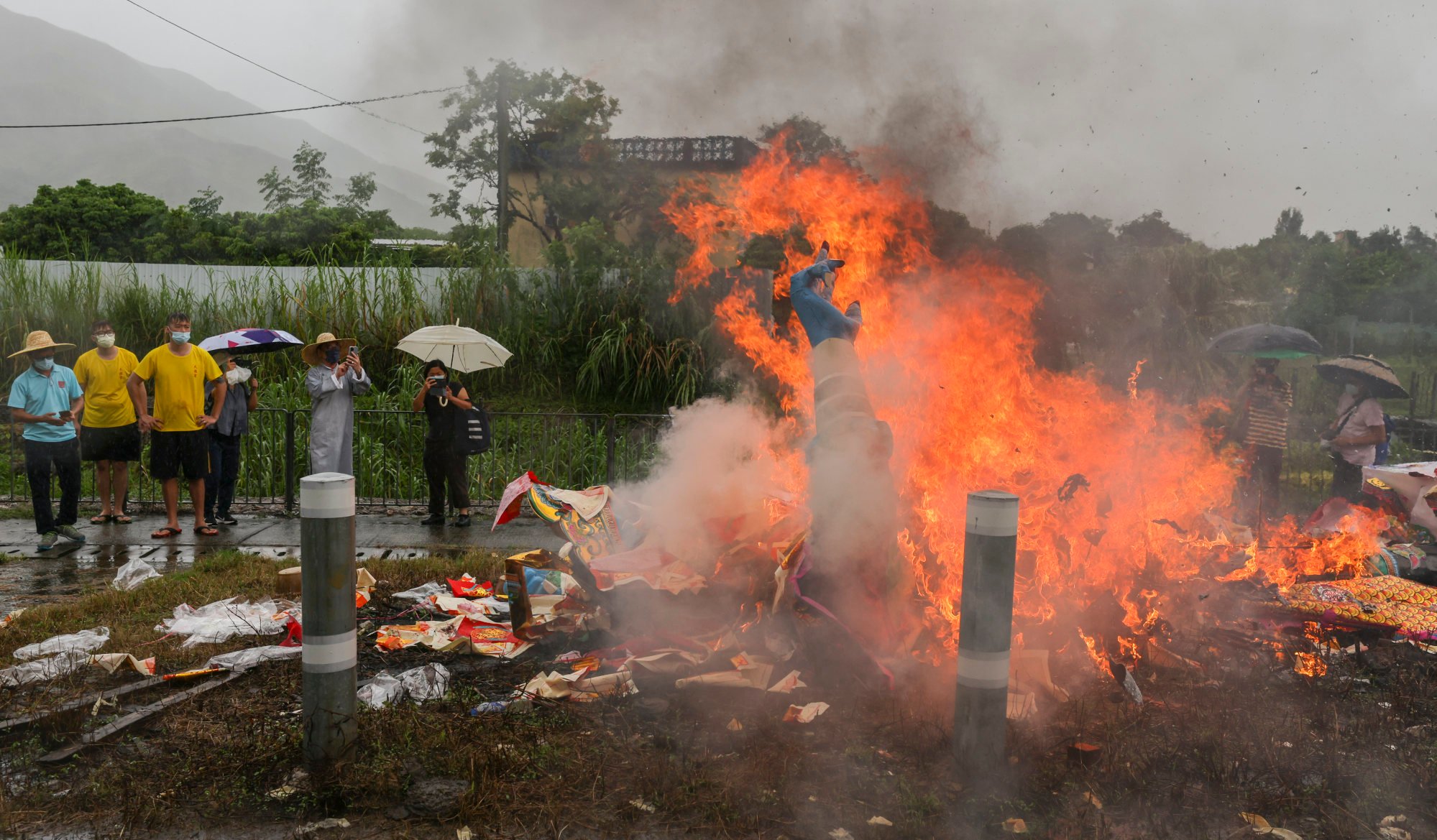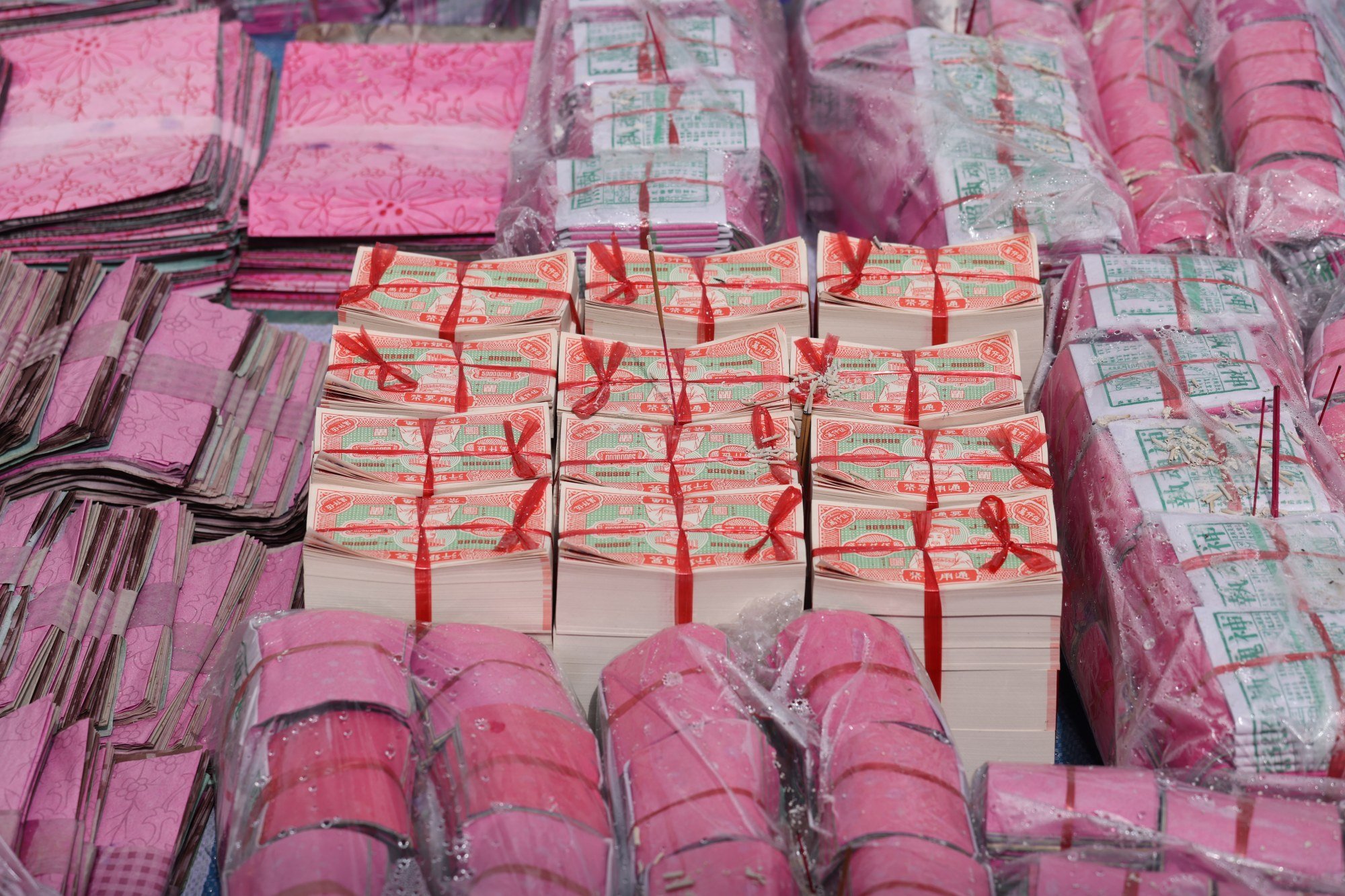Hungry Ghost Festival: paper offerings artist on making ‘Star Wars’ helmets and chicken wings, but not Covid-19 face masks
Although a “Hell Covid-19 vaccine” paper effigy in Malaysia is making headlines, Au Yeung Ping-chi, owner of Bo Wah Effigies in Sham Shui Po, says he doesn’t believe viruses exist in the afterworld
Also called the Yu Lan Festival, this Chinese holiday is known for the paper offerings made of joss paper and bamboo that are burned for the dead to have in the afterworld
Kelly Fung | 23:00pm, 20 Aug, 2021
Kelly Fung
Kelly joined the Post in 2018. She studied literature and cultural studies at university. She is studying for her master’s degree in journalism at JMSC, HKU. Telling the stories of local communities and individuals through her words and camera lens is what captivates her.
20 Aug, 2021
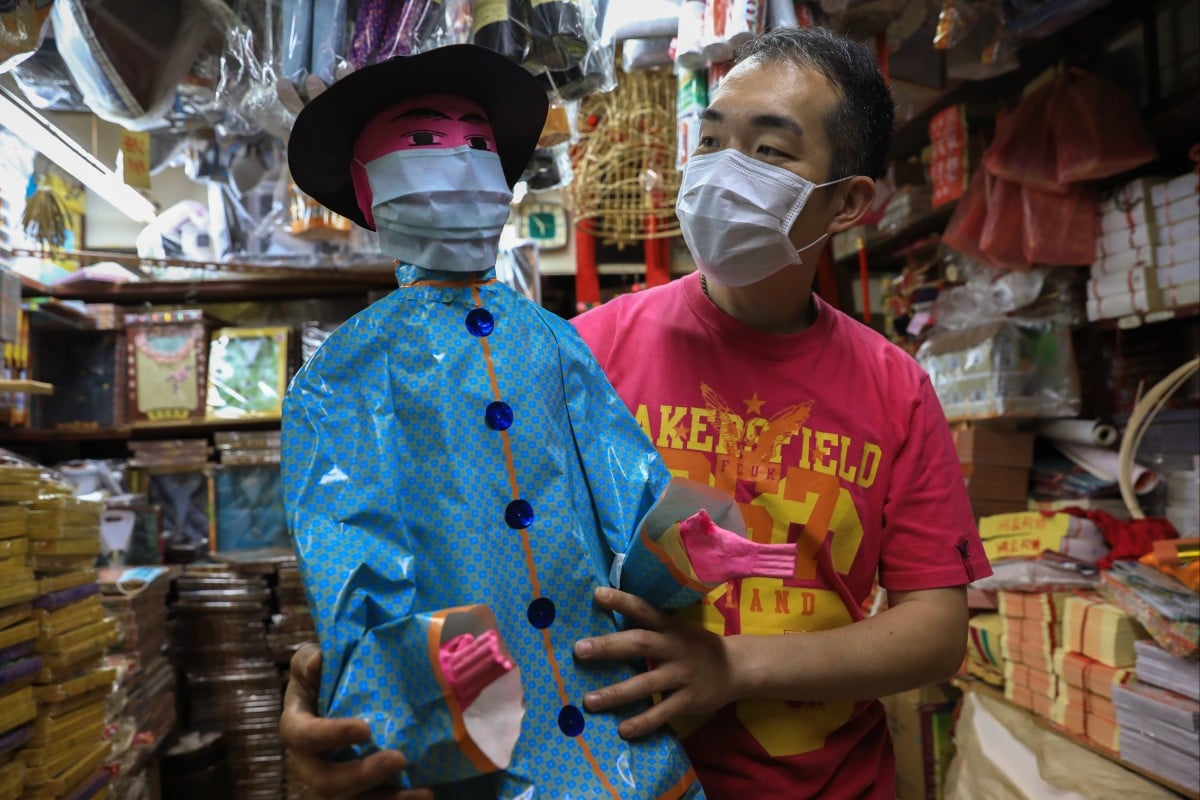
Photo: May Tse
From a paper effigy of a Darth Vader helmet to a bowl of the popular TamJai spicy noodle with chicken wings, Au Yeung Ping-chi’s creativity has no bounds when it comes to making sure that the dead are well fed and having fun.
The 45-year-old Hongkonger has spent the last 20 years making impressively intricate paper effigies, which are created and then burned as offerings to those who have died.
In Chinese culture, it is believed that the deceased will receive the item after it is burned, and in recent years, people have been burning smartphones, televisions and other items to keep the dead entertained in the afterworld.
This Sunday – the 15th of the seventh month under the lunar calendar – is the Hungry Ghost Festival. According to Chinese tradition, this is when the spirits of the dead return to wander the earth and visit the living for a short time.
Dubbed as the “designer for the deceased’’, Au Yeung is well known among others in the industry because of his experimental style. Using bamboo strips for the skeleton and joss paper for the outer layer, he crafts a wide variety of offerings such as scooters, vacuum cleaners, electric guitars and even a charcoal burger with shrimp.
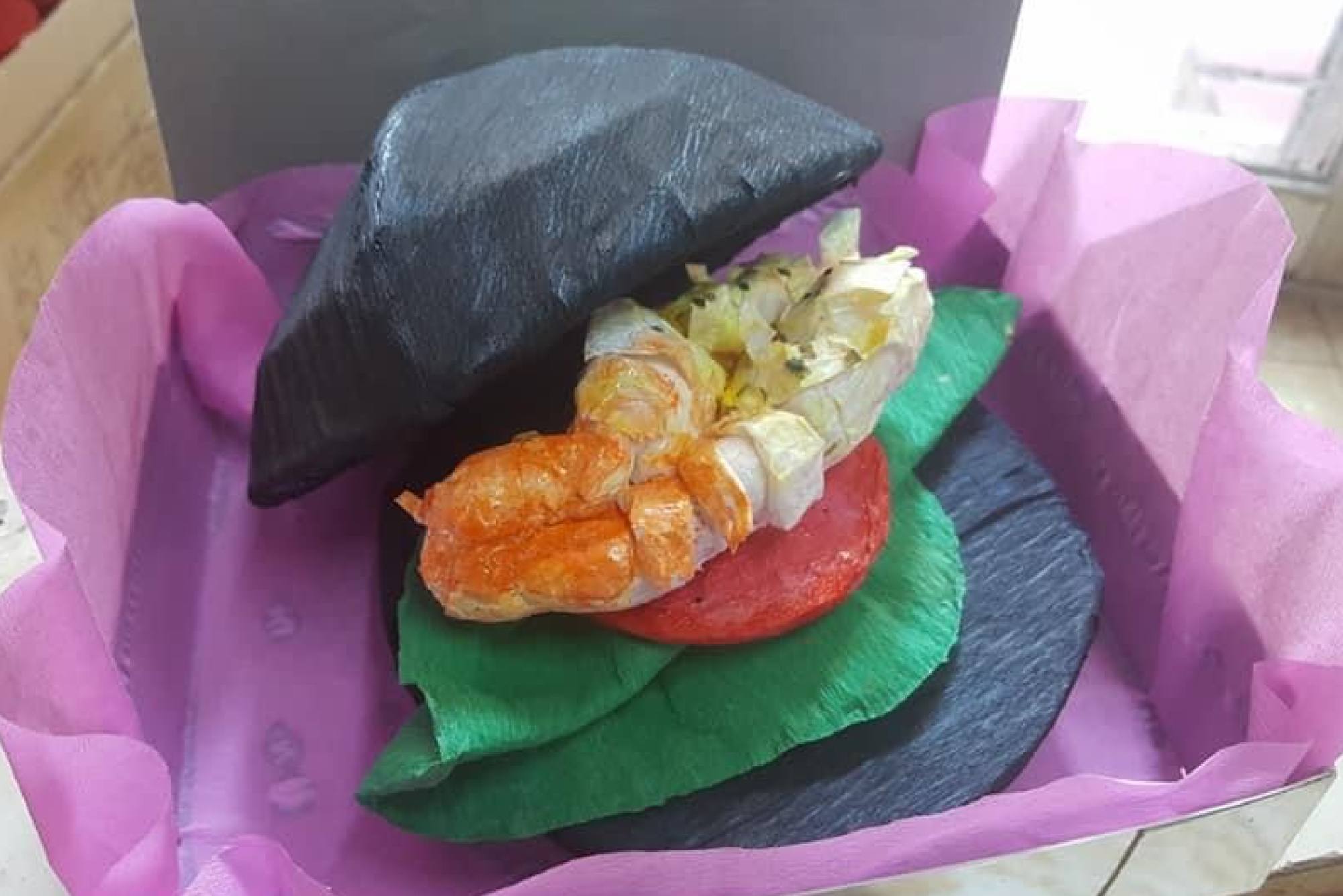
Photo: Au Yeung Ping-chiAu Yeung Ping-chi has even created a paper offering of a popular treat – a charcoal ebi burger. Photo: Au Yeung Ping-chi
“Paper offerings are often perceived as taboo and old-fashioned. I want to destigmatise it,” he said. “The year I made the scooter, some journalists said I was a trendsetter.”
A graduate of the First Institute of Art & Design, Au Yeung said that when he was young, he had never thought of following in the footsteps of his father, who started Bo Wah Effigies in Sham Shui Po during the 60s.
“Before, I wasn’t invested in it because I was under my father’s wing,” he said, adding that he could easily avoid learning the craft since his father ran the shop on his own.
“I didn’t communicate much with my father, so I wouldn’t ask him to teach me anything,” he explained.
Au Yeung said he had only ever helped his father make lanterns when the business had received a large order, which was an opportunity for him to make money.
But when he could not find a job after graduating from design school, and his father’s health was deteriorating, he wrote his father a letter asking him to retire and eventually took over the business.
The artist said it took time to teach himself the difficult craft, and he regretted not learning more when he was younger. But as he practised more, he began to take pride in creating increasingly challenging pieces.
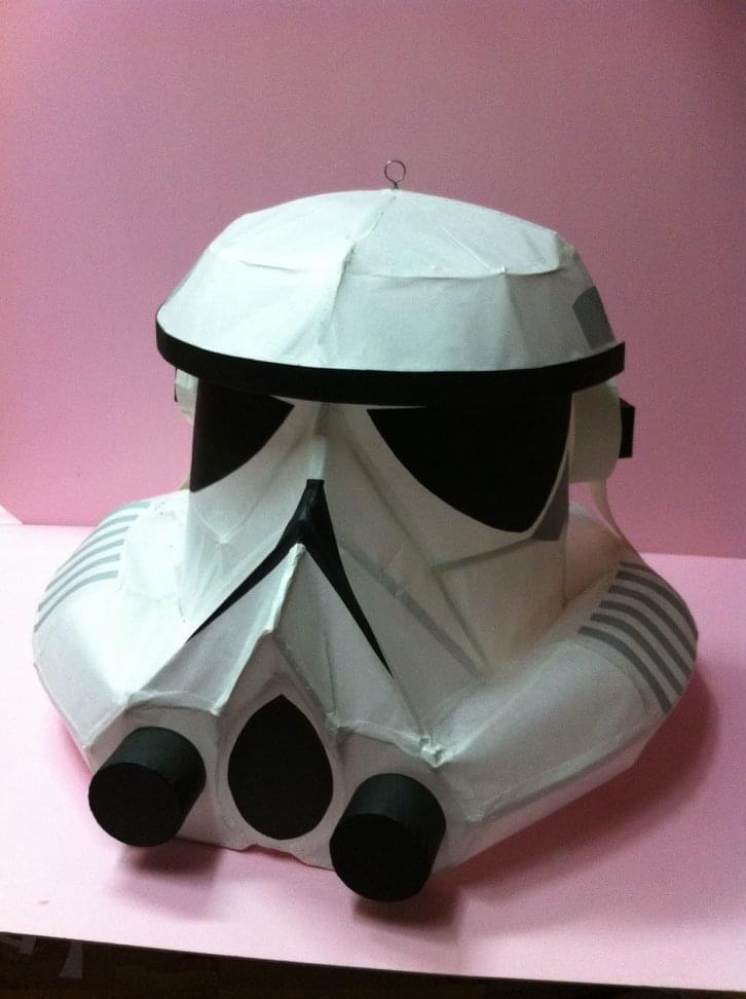
Photo: Au Yeung Ping-chi This paper lampshade in the form of a stormtrooper’s helmet inspired the artist to make one of Darth Vader’s helmet as well. Photo: Au Yeung Ping-chi
One time, a customer, who was a big fan of Star Wars, asked him to make a paper lampshade that would look like a Star Wars Stormtrooper helmet. Au Yeung was so happy with the final product that he went on to make a Darth Vader helmet to display at the store.
“I don’t make the same thing over and over like other paper effigy makers in the industry ... every piece presents a new challenge,” he said.
A few years ago, he took on the challenge of making a papier mache of food from a local noodle chain: a bowl of medium-spicy Yunnan-style TamJai rice noodles with pork and a side of chicken wings. It was a request from a man in his 20s who wanted to offer this to his late girlfriend, who used to love the noodle combo.
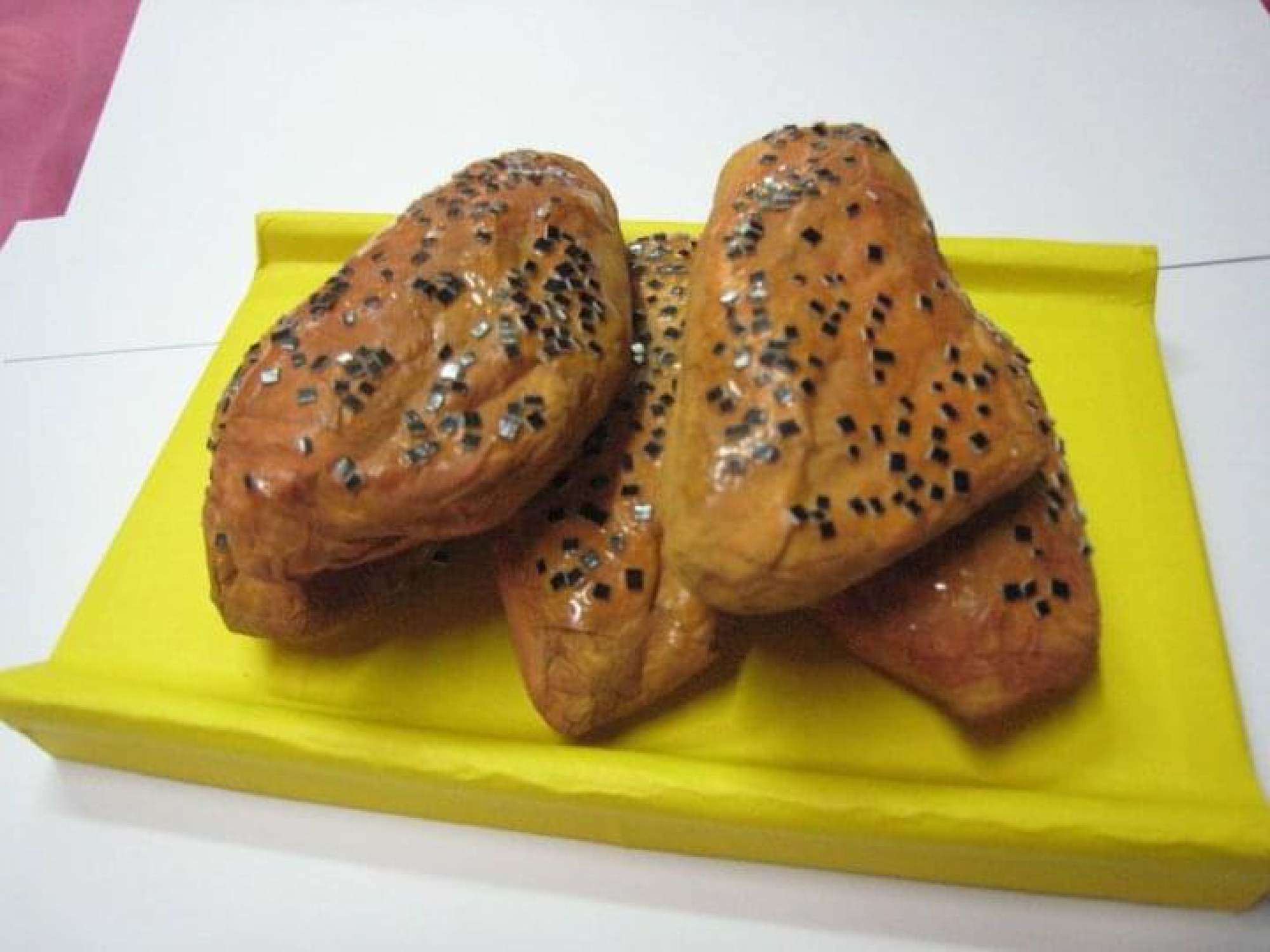
Photo: Au Yeung Ping-chiThis paper effigy of TamJai’s Bandit Chicken Wings was a request from a young man who wanted to offer this to his late girlfriend. Photo: Au Yeung Ping-chi
“I bought a takeaway of the noodles and studied how to make it,” he said. The chicken wings were very hard to make, and he had to use frozen chicken wings to form the shape.
Aside from food, Au Yeung has also made electric guitars for famous artists. He crafted one for the late Ellen Joyce Loo from the well-known singing duo at17, who died in 2018. Because of how complex the model was, it took him a week to finish.
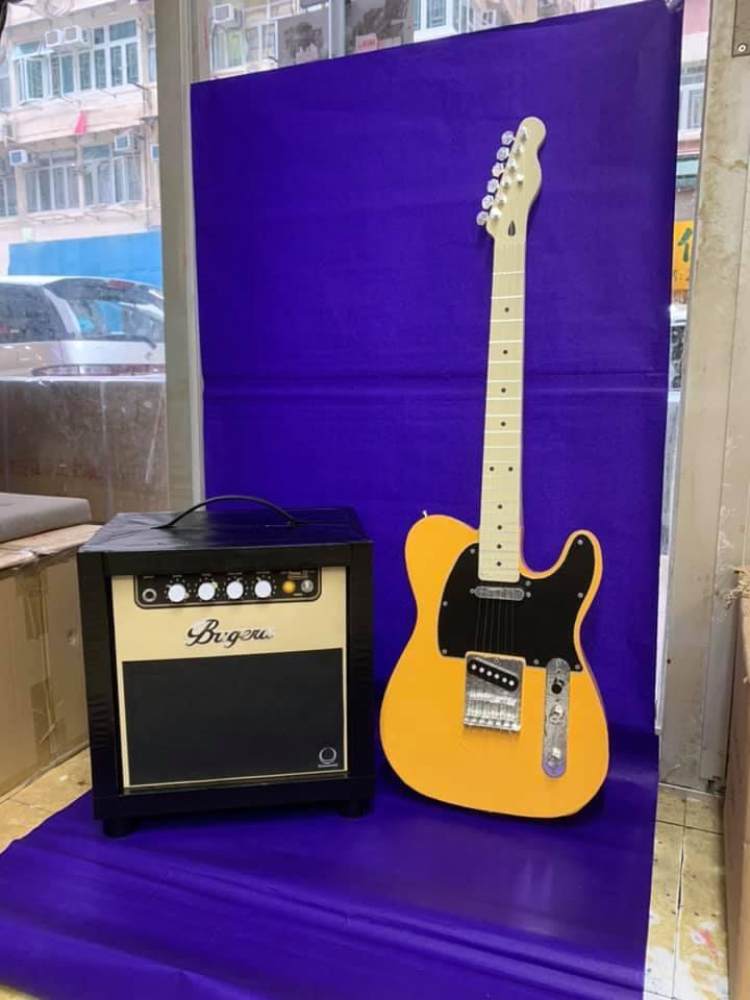
Photo: Au Yeung Ping-chiAu Yeung Ping-chi made a paper offering of an electric guitar for Ellen Joyce Loo from the vocal duo at17, who died in 2018. Photo: Au Yeung Ping-chi
Despite the fact that most of his artwork is eventually burned, the artist has never felt that these projects are a waste of time. He believes his job is to be the bridge between the worlds of the living and the dead, and to fulfil the wishes of the people who have lost their loved ones.
Making sure that the noodles, phones and other items looked real was a way to show respect to his clients and to the deceased, he said.
Earlier this month, a Malaysian paper effigy store was found to be selling “Hell Covid-19 Vaccine” for the dearly departed and wandering spirits during the Hungry Ghost Festival.
Au Yeung received a similar request some time ago from one of his customers who asked if he could make face masks out of joss paper, but he declined because he was not convinced that viruses exist after death.
“These days people want more practical items like daily necessities,” he explained, adding that paper offerings of luxury goods were no longer trendy, which could be attributed to the financial situations of the deceased when they were alive.
His paper offerings have even attracted foreigners and art curators. In recent years, he has had the opportunity to create bamboo strip artwork for two local creativity hubs – he made clouds for the Jockey Club Creative Arts Centre and lamps for PMQ. These experiences made him realise that his paper crafts could have a place in art galleries, too.
His goal is to one day open a solo exhibition to showcase his innovative take on a traditional art.
“Paper effigies are not just something to burn. They can also be pieces of art,” he said.





 Reply With Quote
Reply With Quote

 Photo: May Tse
Photo: May Tse Photo: Au Yeung Ping-chiAu Yeung Ping-chi has even created a paper offering of a popular treat – a charcoal ebi burger. Photo: Au Yeung Ping-chi
Photo: Au Yeung Ping-chiAu Yeung Ping-chi has even created a paper offering of a popular treat – a charcoal ebi burger. Photo: Au Yeung Ping-chi Photo: Au Yeung Ping-chi This paper lampshade in the form of a stormtrooper’s helmet inspired the artist to make one of Darth Vader’s helmet as well. Photo: Au Yeung Ping-chi
Photo: Au Yeung Ping-chi This paper lampshade in the form of a stormtrooper’s helmet inspired the artist to make one of Darth Vader’s helmet as well. Photo: Au Yeung Ping-chi Photo: Au Yeung Ping-chiThis paper effigy of TamJai’s Bandit Chicken Wings was a request from a young man who wanted to offer this to his late girlfriend. Photo: Au Yeung Ping-chi
Photo: Au Yeung Ping-chiThis paper effigy of TamJai’s Bandit Chicken Wings was a request from a young man who wanted to offer this to his late girlfriend. Photo: Au Yeung Ping-chi Photo: Au Yeung Ping-chiAu Yeung Ping-chi made a paper offering of an electric guitar for Ellen Joyce Loo from the vocal duo at17, who died in 2018. Photo: Au Yeung Ping-chi
Photo: Au Yeung Ping-chiAu Yeung Ping-chi made a paper offering of an electric guitar for Ellen Joyce Loo from the vocal duo at17, who died in 2018. Photo: Au Yeung Ping-chi
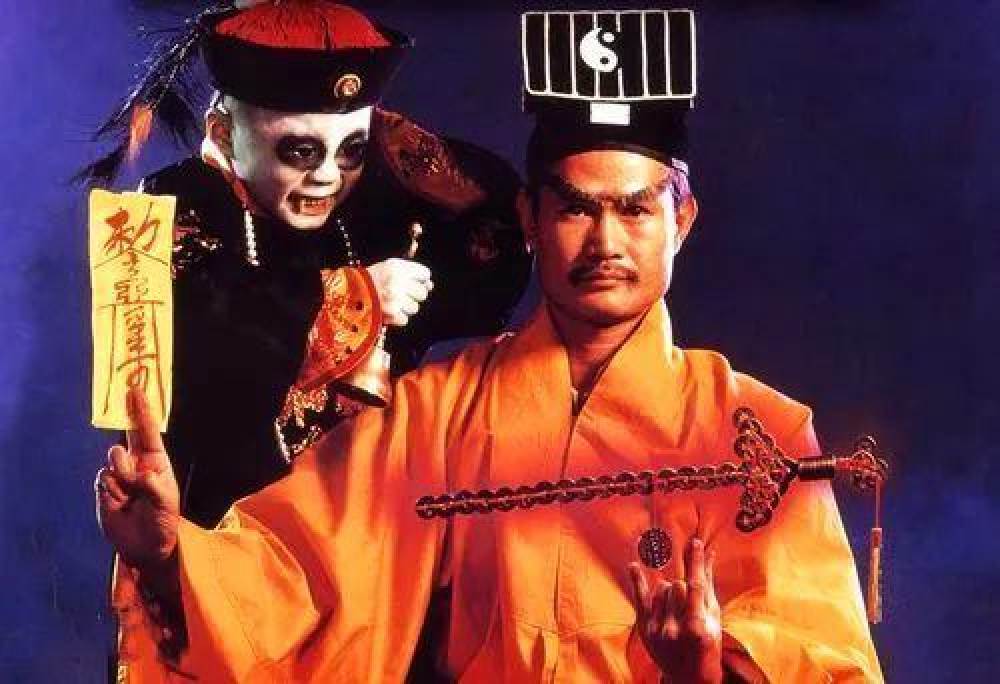
 It is common in Chinese communities to see people, such as these men in Wan Chai, Hong Kong, burning paper offerings in the street during the Hungry Ghost Festival – to help wandering ghosts when they return to the afterlife. Photo: Winson Wong
It is common in Chinese communities to see people, such as these men in Wan Chai, Hong Kong, burning paper offerings in the street during the Hungry Ghost Festival – to help wandering ghosts when they return to the afterlife. Photo: Winson Wong
